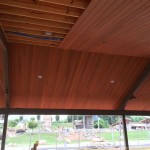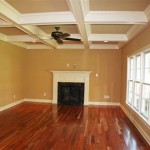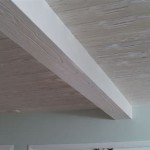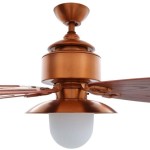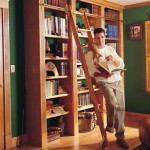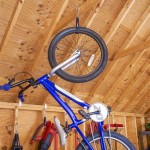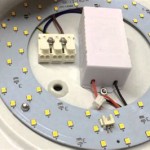Hanging A Fan On A Sloped Ceiling: A Comprehensive Guide
Installing a ceiling fan on a sloped ceiling presents unique challenges compared to a standard, flat ceiling installation. Understanding the necessary components, safety precautions, and proper installation techniques is crucial for a successful and safe outcome. This article provides a comprehensive guide to hanging a fan on a sloped ceiling, covering essential considerations and detailed instructions.
Determining Ceiling Slope and Compatibility
The first step in hanging a ceiling fan on a sloped ceiling is accurately measuring the slope. This measurement is typically expressed as a ratio (rise over run) or as an angle in degrees. A standard protractor can be used for a rough estimate, but a digital level with angle measurement capabilities provides a more precise reading. The ceiling fan's compatibility with the measured slope is a critical factor. Most ceiling fans are designed for installation on flat ceilings or slight slopes, usually not exceeding a certain degree, typically around 15 to 20 degrees. Installing a standard fan on a steeper slope without modifications can lead to instability, wobble, and potential safety hazards.
Specialized ceiling fans designed specifically for sloped ceilings are available. These fans often feature a ball-and-socket mounting system that allows the fan to hang plumb despite the angle of the ceiling. The product specifications of the fan should be carefully reviewed to ensure it is suitable for the measured slope. If the slope exceeds the fan's specified limit, further modifications or alternative solutions may be necessary.
In cases where the slope is too steep for a standard or even a sloped-ceiling fan, consider using a "vaulted ceiling adapter." This adapter is a bracket that creates a level mounting surface for the fan, effectively negating the angle of the ceiling. Vaulted ceiling adapters are available in various sizes and designs to accommodate different ceiling slopes and fan types. When selecting an adapter, ensure it is compatible with the chosen fan and that it can adequately support the fan's weight. Always verify that the adapter is securely anchored to the ceiling joist.
Essential Hardware and Safety Precautions
Before commencing the installation process, gather all necessary hardware and prioritize safety. The following tools and materials are typically required:
- Ceiling fan (compatible with sloped ceilings or with a vaulted ceiling adapter)
- Downrod (length appropriate for the ceiling height)
- Mounting bracket (included with the fan or adapter)
- Electrical wiring connectors (wire nuts)
- Screwdrivers (Phillips and flathead)
- Wire stripper/cutter
- Electrical tape
- Pliers
- Ladder (stable and appropriate height)
- Stud finder (to locate ceiling joists)
- Drill with appropriate drill bits
- Level
- Measuring tape
- Safety glasses
- Gloves
- Voltage tester (to ensure power is off)
Safety is paramount when working with electricity and heights. Before starting the installation, turn off the power to the circuit at the breaker box. Use a voltage tester to confirm that the power is completely off at the ceiling junction box. Wear safety glasses and gloves to protect your eyes and hands. Ensure the ladder is stable and placed on a level surface. If unsure about any aspect of the electrical wiring or installation process, consult a qualified electrician.
A critical element of safe installation is ensuring the ceiling fan is securely attached to a structural element of the ceiling, specifically a ceiling joist. Never rely solely on the existing junction box to support the weight of the fan. Junction boxes are typically not designed to hold the weight of a ceiling fan, and failure to properly secure the fan to a joist can result in the fan falling and causing injury or damage. Use a stud finder to locate the ceiling joist. If necessary, reinforce the existing junction box with a fan-rated support brace that spans between two joists to provide additional support.
Step-by-Step Installation Process
The following steps outline the general process of installing a ceiling fan on a sloped ceiling. These steps may vary slightly depending on the specific fan model and vaulted ceiling adapter used. Always refer to the manufacturer's instructions for detailed guidance.
- Prepare the Wiring: Ensure the power is off at the breaker box. Carefully remove the existing light fixture and disconnect the wires. Identify the hot (usually black), neutral (usually white), and ground (usually green or bare copper) wires. Use wire strippers to expose about ½ inch of wire on each end.
- Install the Mounting Bracket: If using a vaulted ceiling adapter, attach it to the ceiling joist according to the manufacturer's instructions. Ensure it is securely fastened and level. Then, attach the mounting bracket to the adapter, again following the manufacturer's instructions. If not using an adapter, attach the mounting bracket directly to the ceiling joist, ensuring it is securely fastened and aligned.
- Assemble the Fan Motor and Downrod: Assemble the fan motor according to the manufacturer's instructions, connecting the downrod to the motor housing. Feed the wires from the motor through the downrod. The length of the downrod should be chosen based on the ceiling height to ensure adequate clearance between the fan blades and the floor. A general guideline is to have at least 7 feet of clearance between the floor and the fan blades. Longer downrods are needed for higher ceilings.
- Hang the Fan Motor Assembly: Carefully lift the fan motor assembly and hang it from the mounting bracket. Most mounting brackets have a hook or ball-and-socket mechanism that allows the fan to hang temporarily while you connect the wiring.
- Connect the Wiring: Connect the wires from the fan to the wires in the junction box, using wire nuts to secure the connections. Match the colors of the wires: black to black (hot), white to white (neutral), and green or bare copper to green or bare copper (ground). Wrap electrical tape around the wire nuts for added security. Ensure that none of the bare wires are exposed.
- Secure the Fan Motor Assembly: Once the wiring is connected, carefully lift the fan motor assembly into the mounting bracket and secure it according to the manufacturer's instructions. Ensure all screws are tightened securely.
- Attach the Fan Blades: Attach the fan blades to the motor housing according to the manufacturer's instructions. Ensure all screws are tightened securely. Use a level to check that the blades are balanced. If the blades are not balanced, the fan may wobble. Some fans come with balancing kits that include weights that can be attached to the blades to correct any imbalance.
- Install the Light Kit (if applicable): If the fan has a light kit, install it according to the manufacturer's instructions. Connect the wiring for the light kit, following the color-coded wiring connections.
- Install the Canopy: The canopy is the decorative cover that conceals the wiring and mounting bracket. Install the canopy according to the manufacturer's instructions.
- Test the Fan: Turn on the power at the breaker box. Test the fan to ensure it is working properly. Check that the fan blades are rotating in the correct direction. If the blades are rotating in the wrong direction, most fans have a reverse switch that can be used to change the direction of rotation. Test the light kit to ensure it is working properly.
Throughout the installation process, continually refer to the manufacturer's instructions for the specific ceiling fan model. The instructions will provide detailed diagrams and specific steps that are essential for proper installation.
Troubleshooting Common Issues
Even with careful installation, some issues may arise. Here are some common problems and potential solutions:
- Fan Wobbles: A wobbling fan is a common problem. It can be caused by unbalanced blades, loose screws, or an improperly installed mounting bracket. Check that all screws are tightened securely. Use a balancing kit to balance the blades. Ensure that the mounting bracket is securely attached to the ceiling joist.
- Fan Operates Noisily: A noisy fan can be caused by loose screws, dry motor bearings, or interference with other objects. Check that all screws are tightened securely. Lubricate the motor bearings with a light oil. Ensure that the fan blades are not hitting any objects, such as the ceiling or walls.
- Fan Does Not Turn On: If the fan does not turn on, check that the power is turned on at the breaker box. Check that the wiring connections are secure. Check that the fan motor is not burned out.
- Light Kit Does Not Work: If the light kit does not work, check that the bulb is not burned out. Check that the wiring connections are secure. Check that the light kit socket is functioning properly.
If these troubleshooting steps do not resolve the issue, consult a qualified electrician. Attempting to repair electrical components without proper knowledge and experience can be dangerous.
Properly hanging a ceiling fan on a sloped ceiling requires careful planning, adherence to safety precautions, and meticulous execution. By following these guidelines and consulting the manufacturer's instructions, a safe and functional installation can be achieved. Remember to prioritize safety and, when in doubt, seek professional assistance.

How To Install A Ceiling Fan On Sloped Lemon Thistle

How To Choose A Ceiling Fan For Vaulted Ceilings Lightology

How To Install A Ceiling Fan On Sloped Lemon Thistle

How To Find Ceiling Fans Slope Adapters And Downrods For Angled Ceilings Delmarfans Com

How To Choose A Ceiling Fan For Vaulted Ceilings Lightology

Ensuring Proper Ceiling Fan Installation With Vaulted Ceilings

Fans On An Angle Installing Ceiling Angled Or Raked

Ceiling Fans For Angled Ceilings

How To Install A Fan On Steep Ceiling Faro Barcelona

Hunter Fans How To Install Your Ceiling Fan Cpo S
Related Posts

